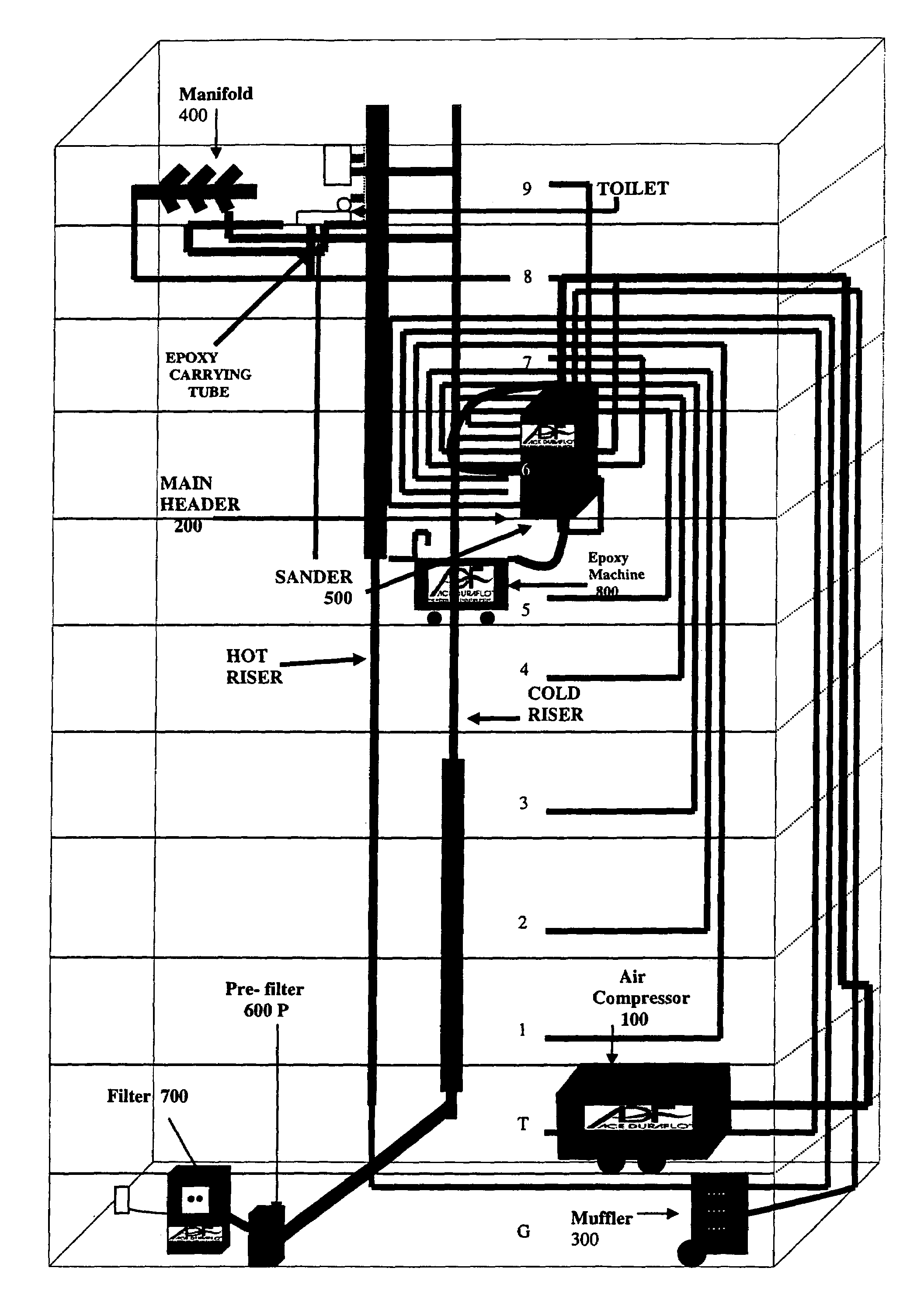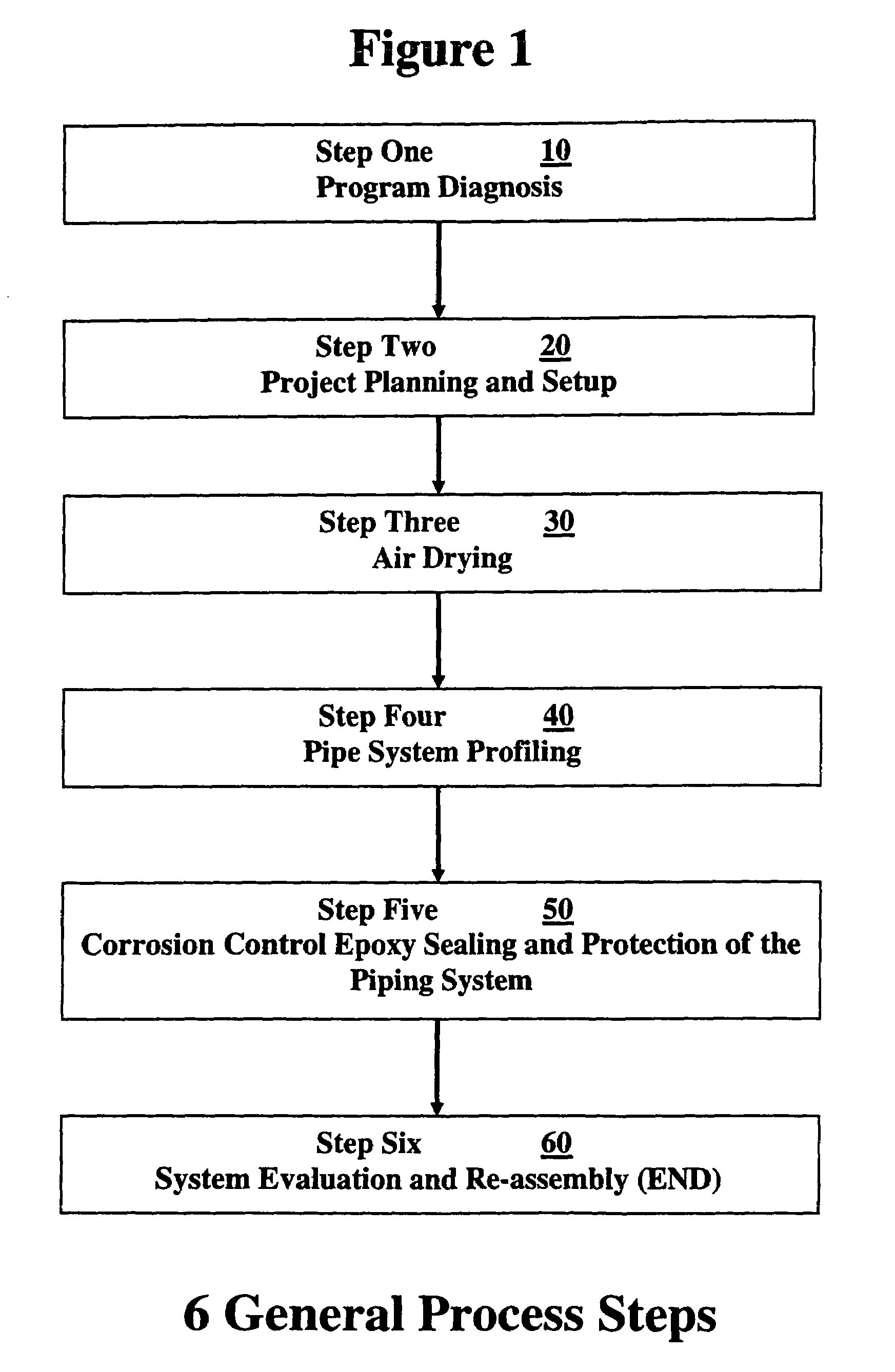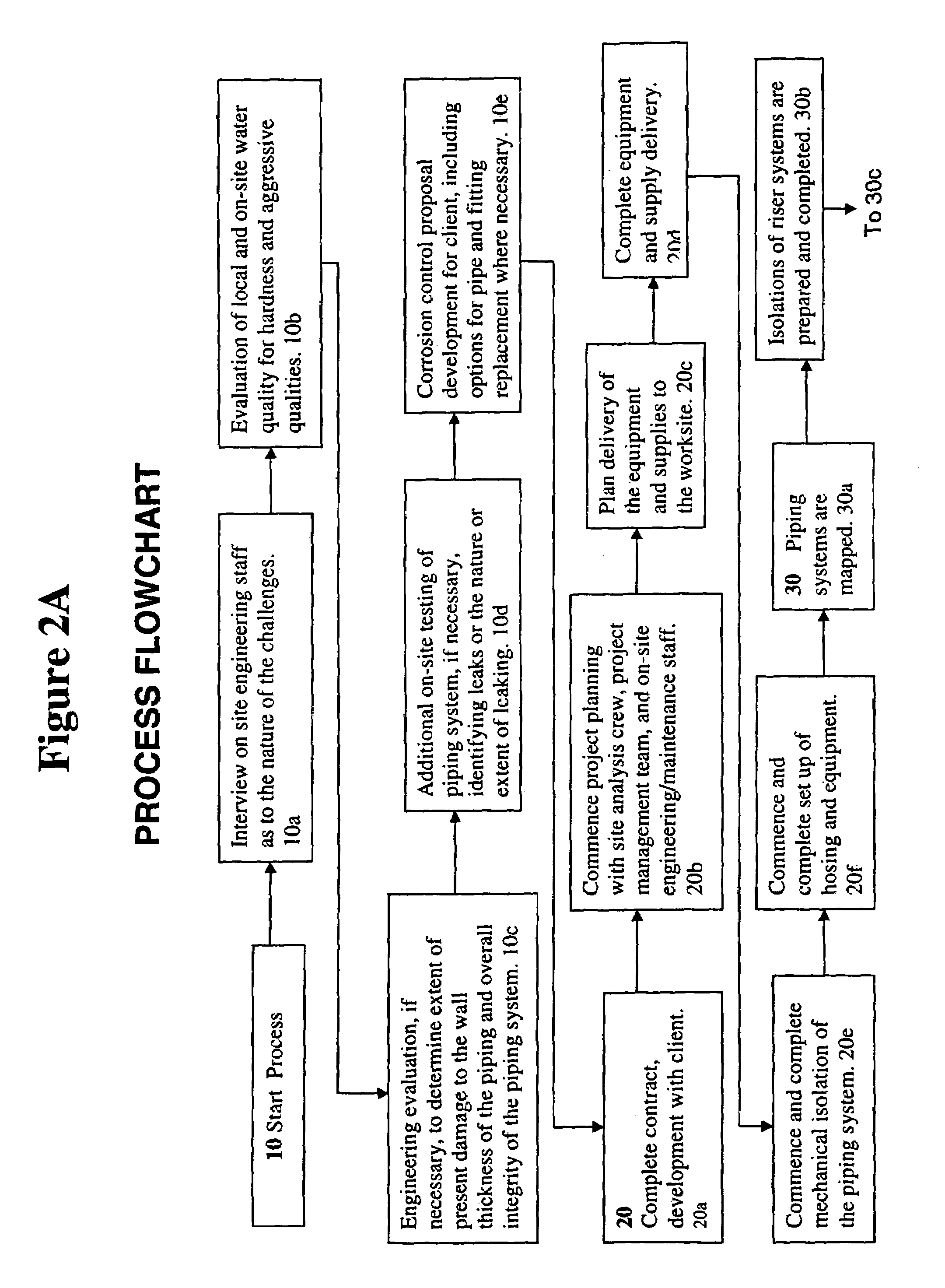Barrier coating corrosion control methods and systems for interior piping systems
a corrosion control and corrosion control technology, applied in coatings, mechanical equipment, manufacturing tools, etc., can solve problems such as blockage from mineral deposits, damage caused by rust or other deposits to the pipe wall, and users' common problems with their pipes
- Summary
- Abstract
- Description
- Claims
- Application Information
AI Technical Summary
Benefits of technology
Problems solved by technology
Method used
Image
Examples
Embodiment Construction
[0069]Before explaining the disclosed embodiments of the present invention in detail it is to be understood that the invention is not limited in its application to the details of the particular arrangements shown since the invention is capable of other embodiments. Also, the terminology used herein is for the purpose of description and not of limitation.
[0070]FIG. 1 shows the general six steps for a project overview for applying the barrier coating to an existing piping system, which include step one, 10 program diagnosis, step two, 20 project planning, step three, 30 drying piping system, step four 40, profiling the piping system, step five, 50 barrier coating interior walls of the pipes in the piping system, and final step six 60 evaluation and return to operation of the piping system.
Step One—Problem Diagnosis 10
[0071]For step one, 10, several steps can be done to diagnose the problem with a piping system in a building, and can include:[0072](a) Interview onsite engineering staff...
PUM
| Property | Measurement | Unit |
|---|---|---|
| thickness | aaaaa | aaaaa |
| diameters | aaaaa | aaaaa |
| diameter | aaaaa | aaaaa |
Abstract
Description
Claims
Application Information
 Login to View More
Login to View More - R&D
- Intellectual Property
- Life Sciences
- Materials
- Tech Scout
- Unparalleled Data Quality
- Higher Quality Content
- 60% Fewer Hallucinations
Browse by: Latest US Patents, China's latest patents, Technical Efficacy Thesaurus, Application Domain, Technology Topic, Popular Technical Reports.
© 2025 PatSnap. All rights reserved.Legal|Privacy policy|Modern Slavery Act Transparency Statement|Sitemap|About US| Contact US: help@patsnap.com



